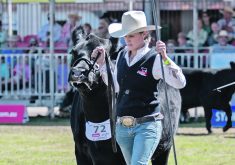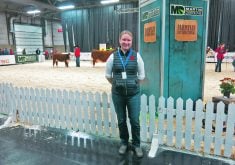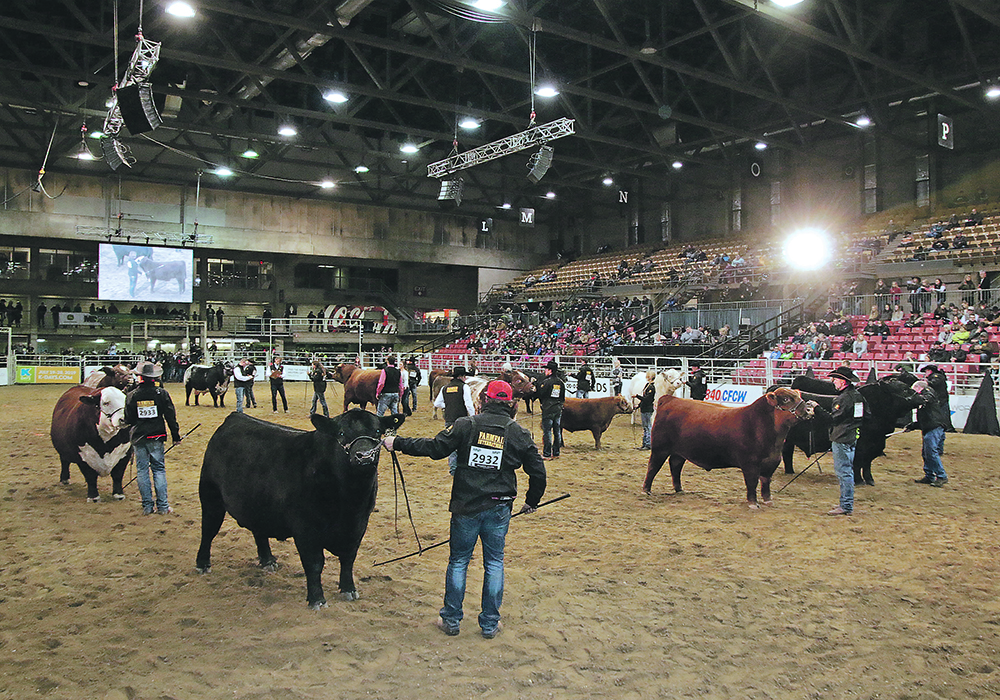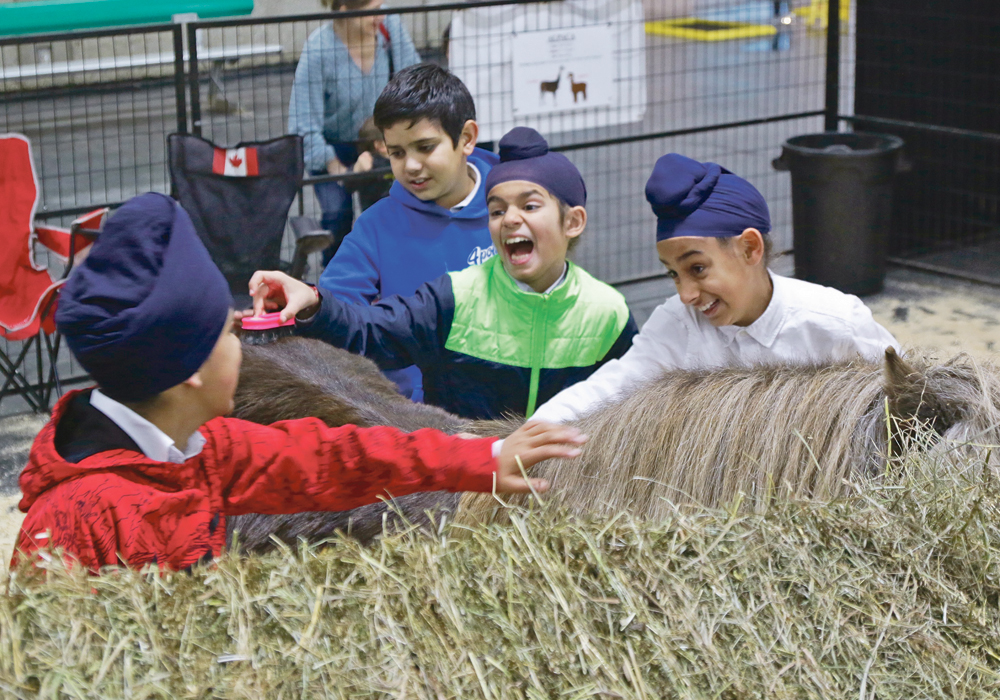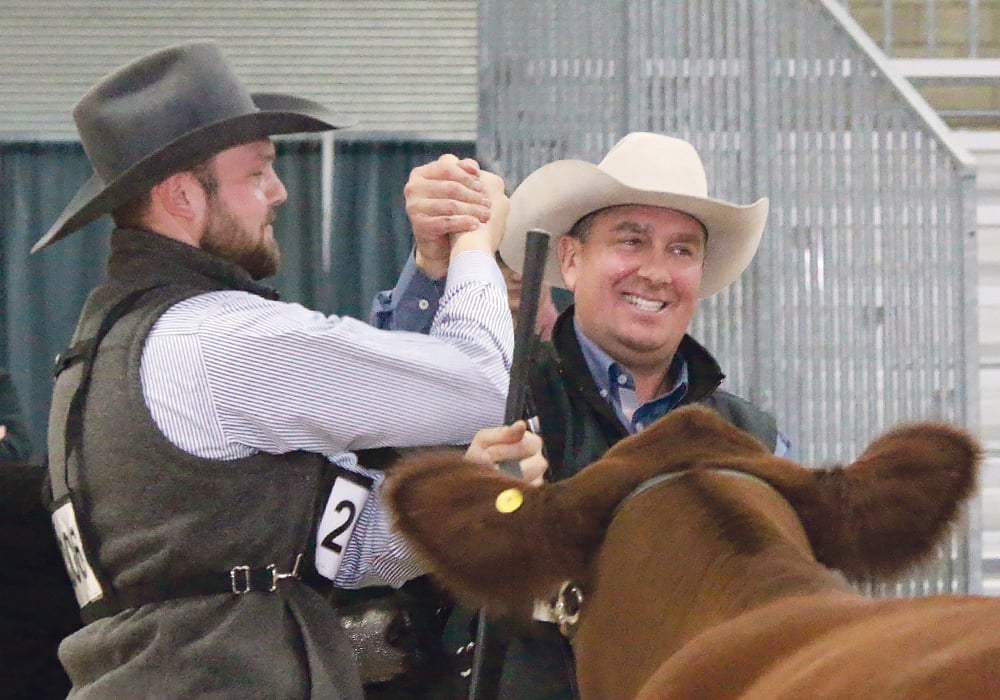Recent exhibitor at Farmfair International says he attends the show more to talk to people than to win in the show ring
Barry Lehmann likes to play chess because he enjoys doing things that make him think.
The same attitude of careful deliberation and strategy that it takes to win the game is how the 53-year-old producer seems to approach his cow-calf operation near Rosthern, Sask.
“You try to be more efficient, you try to be more profitable, and you do all kinds of things in order to try and achieve that by either increasing your gross income or decreasing your expenses,” he said.
He was one of the competitors taking part Nov. 9-12 in Farmfair International at the Edmonton Expo Centre.
Read Also

U.S. bill could keep out Canadian truckers
The Protecting America’s Roads Act, which was tabled in the U.S. House of Representatives at the beginning of October, would “rid the country of illegal immigrant commercial truck drivers and ineligible foreign nationals.”
“We take a little bit of a different approach to showing cattle,” he said as he played chess with his 16-year-old son, Gavin, to wile away the time at the event.
“We’re not here to win. I really don’t care if I placed first or last or anywhere in between in the show. I’m here to talk to people to explain to them this is what we’re doing, this is why we’re doing it, this is why it makes dollars and cents.”
Lehmann’s focus is on raising purebred Shorthorn bulls for the commercial cattle producer.
“I’ve told my children many, many times over here, what the judge thinks in that show ring, it’s irrelevant because 99.9 percent of the time, that judge is never going to buy a bull from me.”
He said when he was his son’s age, he loved grooming his cattle perfectly for the show.
“Now that I’m at the age that I’m at, I really don’t care because having them fluffy and look nice, that’s all great for the show, but it doesn’t turn into dollars and cents for me.”
Lehmann emphasized that he respects other producers’ efforts to prepare and show cattle.
“If other people want to do things differently than me, more power to them… but we have not chased the fads, chased the extremes like some people do,” he said.
“And because of that, in the show ring, we have not done very well, but I really don’t care. That’s not where our bread and butter comes from, is winning grand champion this, that or the other thing.”
Lehmann placed a sign above his cattle at Farmfair that said: “Which bull is more feed efficient?” It was meant to underline what he sees as the problem with the beef industry’s reliance on visual appraisal of what constitutes a desirable animal.
He puts more emphasis on feed efficiency and profitability than he does on cattle appearance.
“The best cattleman in the world cannot walk into a pen and point to one individual animal and say, ‘that one there, that’s the most feed efficient.’ It’s impossible. You have to be able to measure it.”
Lehmann recently adopted technology that measures animal feed intake using RFID tags. It uses a feed bunk that allows only one animal to enter at a time, after which a scanner reads their RFID tag.
Scales on the feed bunks measure feed consumption to a 10-gram resolution, “so it’s very, very precise and accurate,” said Lehmann. Researchers have proven that feed efficiency is a moderately heritable trait, so if producers can identify such cattle in their herds, they can breed them to make genetic progress in that area, he said.
He recently had the equipment delivered to his operation at the Saskvalley Stock Farm. Although it eliminates the need to do testing at a facility in Strathmore, Alta., “it is very expensive,” he said.
“I’m telling people straight out, if you’re planning on only being in the cattle business only two or three years, maybe five years, I don’t think you’ll get your money out of it … According to my penciling out, it’s a long-term thing, but in my opinion, it’s expensive in the short run, and it’s more expensive not to do it in the long run.”
The goal is to breed cattle that maintain their level of performance with the lowest feed, he said. Such traits are vital in an era where beef producers are facing increasing pressure to be more environmentally sustainable, but for Lehmann, the main reason he is doing it is to improve the profitability of his herd.
He and a brother are on the farm full time, along with a third brother who is part time. They calve about 500 cows while dealing with soaring input costs that are “just nuts … and so, you try your best to, like I say, use as little as you can and try to be as profitable as you can.”
Although the brothers used to put up 3,000 bales of hay, it’s now about 300 bales, with their herd fed on corn directly from the field. The cattle are sectioned off with temporary fencing that is moved every few days “because we’re trying to make our cows do the harvesting, rather than us go out with a tractor and harvesting the feed,” he said.
The farm doesn’t own quads or four wheelers, instead relying on horses to reduce fuel and maintenance costs.
“I don’t like equipment,” said Lehmann. “I feel every time I turn a key, it costs me money, and so I do everything possible I can to try and reduce the number of equipment hours that I do use.”
However, his wife also has an off-farm job as a teacher to help pay the bills.
“We’re an odd industry in that way,” he said about the cow-calf sector.
“You don’t find a local hardware store owner that has a second job in order to support his hardware store … but it comes from a love of what we do, and we will do anything we can to keep going, it seems like.”
As a cow-calf producer, Lehmann enjoys being his own boss and working with his three children as they grow up. He even enjoys how the weather can change his plans at a moment’s notice so no two days are ever the same.
However, he also likes the relationships he’s forged with the “salt-of-the-earth” people in the industry that he’s met by showing cattle.
“You can’t beat them. They make life worth living.”






